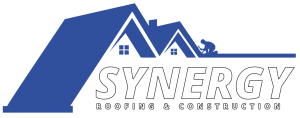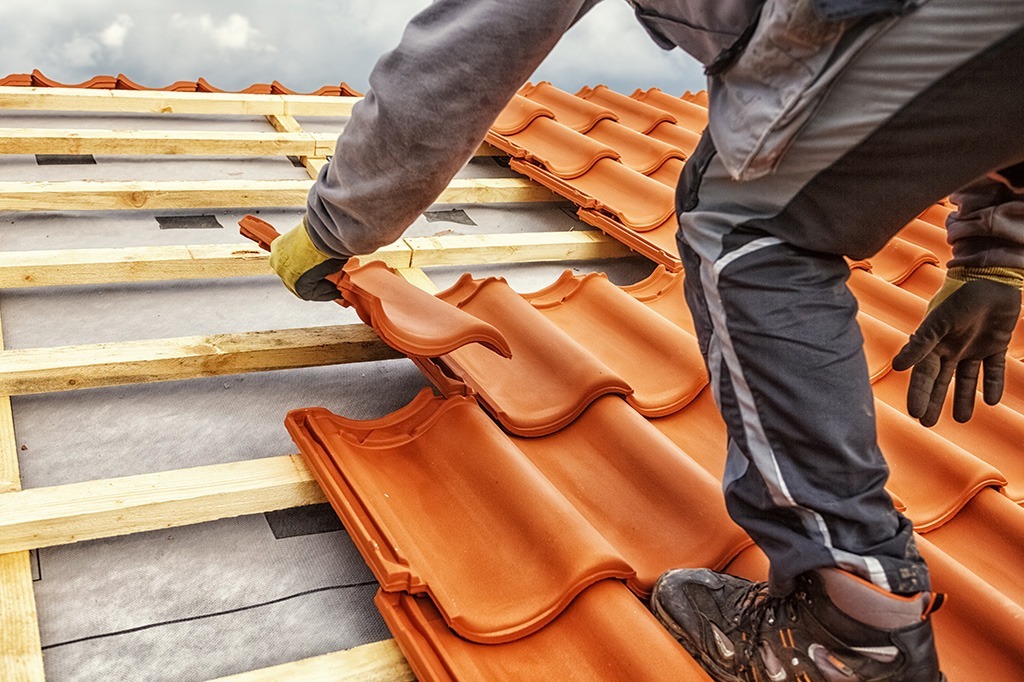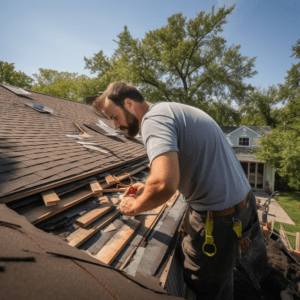Standing seam metal roofs have gained considerable popularity in recent years due to their numerous benefits and impressive performance. These roofs, characterized by their raised seams that interlock to form a continuous surface, offer excellent durability, longevity, and weather resistance. This article aims to provide an informative overview of standing seam metal roofs, including the installation process, different types available, factors to consider when choosing one, maintenance tips, cost and return on investment considerations, as well as their overall longevity and durability.
Key Takeaways
- Standing seam metal roofs are highly durable and can withstand harsh weather conditions.
- They prevent water seepage and are resistant to cracking, warping, or rotting.
- Standing seam metal roofs have a long lifespan, resulting in cost savings due to low maintenance.
- There are various types of standing seam metal roofs available, offering versatility in aesthetics, performance, and ease of installation.
Benefits of Standing Seam Metal Roofs
One advantage of standing seam metal roofs is their durability and longevity. These types of roofs are known for their ability to withstand harsh weather conditions, such as high winds, heavy rain, and even hail. The interlocking design of the standing seam panels provides strength and prevents water from seeping through the roof. Additionally, the metal material used in these roofs is resistant to cracking, warping, or rotting, which further contributes to their long lifespan.
The durability of standing seam metal roofs also translates into cost savings for homeowners. Due to their longevity and low maintenance requirements, these roofs can last up to 50 years or more with proper care. This means that homeowners will not have to worry about frequent repairs or replacement costs associated with other roofing materials.
Furthermore, standing seam metal roofs offer energy efficiency benefits. The reflective properties of metal help reduce heat absorption from the sun’s rays during hot summer months. This can result in lower cooling costs for homeowners by reducing the need for air conditioning. Additionally, some standing seam metal roofs are designed with insulation features that further enhance energy efficiency by reducing heat transfer between the interior and exterior spaces.
Installation Process of Standing Seam Metal Roofs
The installation process of standing seam metal roofs involves a series of systematic steps to ensure proper placement and secure attachment. Firstly, the roof deck is prepared by removing any existing roofing materials and ensuring a clean and smooth surface. Next, an underlayment is installed to provide additional waterproofing and protection against moisture infiltration. The standing seam panels are then carefully measured and cut to fit the specific dimensions of the roof. These panels are typically made from durable metals such as steel or aluminum, which offer high resistance to corrosion and weather damage.
Once the panels are ready, they are secured onto the roof deck using fasteners specifically designed for standing seam metal roofs. These fasteners are strategically placed at predetermined locations along the seams to ensure maximum stability and prevent water penetration.
In addition to attaching individual panels, other components such as ridge caps, flashing, and trim pieces may also be installed to enhance the overall aesthetics and functionality of the roof.
Throughout the installation process, it is crucial that all steps are followed precisely to guarantee a watertight seal and long-lasting performance. Therefore, attention to detail and adherence to manufacturer guidelines are imperative.
Overall, installing a standing seam metal roof requires careful planning, precise measurements, skilled craftsmanship, and adherence to industry standards in order to achieve a high-quality result that will withstand various environmental conditions over time.
Different Types of Standing Seam Metal Roofs
Various styles of interlocking panels are commonly used in the construction industry for the installation of standing seam metal roofs. These interlocking panels provide a secure, watertight seal and enhance the overall durability and longevity of the roof system. One popular type of standing seam metal roof is the double-lock standing seam. This style features two interlocking seams that are crimped together to create a strong bond. The double-lock design provides enhanced resistance against wind uplift and water penetration.
Another common type is the snap-lock standing seam, which utilizes a single interlocking seam that snaps into place with adjacent panels. This style is known for its ease of installation and quick assembly process, making it a preferred choice for many contractors.
Additionally, there are mechanical lock and batten panel systems available for standing seam metal roofs. The mechanical lock system uses separate clips or fasteners to secure each panel together, while the batten panel system features vertical battens that are attached to the roof deck before installing the panels.
Overall, these various styles of interlocking panels offer versatility in terms of aesthetics, performance, and ease of installation when it comes to standing seam metal roofs. Contractors can choose from different options based on project requirements and preferences.
Factors to Consider When Choosing a Standing Seam Metal Roof
When choosing a standing seam metal roof, there are several important factors to consider. One of these is the lifespan of the roofing material. Metal roofs have a longer lifespan compared to other roofing materials such as asphalt shingles, with an average life expectancy of 40-70 years. Another important factor is the energy efficiency benefits of a standing seam metal roof. These roofs are highly reflective and can help reduce cooling costs by reflecting sunlight and heat away from the building. Lastly, it is essential to consider the installation cost comparison between standing seam metal roofs and other roofing options. While metal roofs may have a higher upfront cost, their longevity and energy efficiency can result in long-term savings for homeowners or building owners.
Roofing Material Lifespan
Roofing material lifespan can be significantly extended with proper maintenance and regular inspections. Standing seam metal roofs, known for their durability and longevity, have an average lifespan of 40-70 years. However, this can vary depending on several factors. The quality of the materials used, installation techniques, climate conditions, and maintenance practices all play a crucial role in determining the lifespan of a standing seam metal roof. Regular inspections are essential to identify any signs of damage or deterioration early on. Prompt repairs and proactive maintenance measures such as clearing debris and ensuring proper drainage are necessary to prevent issues that could shorten the roof’s lifespan. Additionally, applying protective coatings and conducting routine cleaning can help preserve the appearance and performance of the roof over time. By adhering to these practices, homeowners can maximize the longevity of their standing seam metal roofs.
Energy Efficiency Benefits
To enhance energy efficiency, the utilization of reflective coatings on roofs can reduce heat absorption and lower cooling demands. Standing seam metal roofs offer several benefits in terms of energy efficiency. The design of these roofs allows for the installation of reflective coatings, such as cool roof coatings, which can reflect a significant amount of solar radiation back into the atmosphere instead of absorbing it. This helps to reduce the amount of heat transferred into the building, thereby decreasing the need for air conditioning and lowering cooling demands. Additionally, standing seam metal roofs have high thermal emissivity, allowing them to radiate heat effectively during hot weather conditions. This further contributes to reducing cooling requirements and improving overall energy efficiency in buildings. Thus, using standing seam metal roofs with reflective coatings can be an effective strategy for enhancing energy efficiency and reducing environmental impact.
Installation Cost Comparison
The cost of installation can vary significantly depending on the type of roofing material chosen. When comparing the installation costs of standing seam metal roofs with other types of roofing materials, it is important to consider several factors. Firstly, standing seam metal roofs require specialized skills and equipment for proper installation, which can contribute to higher labor costs compared to more traditional asphalt shingle roofs. Additionally, the cost of materials for standing seam metal roofs tends to be higher than that of other roofing options such as asphalt or wood shakes. However, it is worth noting that standing seam metal roofs have a longer lifespan and lower maintenance requirements, potentially offsetting these initial installation costs over time. Ultimately, when considering the overall value and long-term durability of standing seam metal roofs, they may prove to be a worthwhile investment despite their higher initial installation costs.
Maintenance Tips for Standing Seam Metal Roofs
This discussion will focus on the maintenance tips for standing seam metal roofs, specifically in preventing rust and corrosion, as well as cleaning and debris removal. Preventing rust and corrosion is crucial for maintaining the integrity of a standing seam metal roof, as exposure to moisture and other environmental factors can cause damage over time. Cleaning the roof regularly and removing any debris that may accumulate is also important to prevent potential issues such as clogging of drains or gutters, which can lead to water pooling and further damage.
Preventing Rust and Corrosion
One method for preventing rust and corrosion on standing seam metal roofs involves applying a protective coating. This coating acts as a barrier between the metal surface and external elements, such as moisture, oxygen, and pollutants, which are known to cause rust and corrosion. The protective coating is typically made of materials like epoxy or polyurethane that are designed to withstand harsh environmental conditions. Before applying the coating, it is important to thoroughly clean the roof surface to remove any dirt, debris, or existing rust. Additionally, regular inspections should be conducted to identify any areas where the coating may have deteriorated or been damaged. Prompt repairs and reapplication of the protective coating in these areas can help ensure long-term protection against rust and corrosion on standing seam metal roofs.
Cleaning and Debris Removal
Regular cleaning and debris removal are essential maintenance practices for ensuring the longevity and performance of roofs. Standing seam metal roofs, in particular, benefit from regular cleaning to prevent the accumulation of dirt, leaves, branches, and other debris. These materials can trap moisture against the roof surface, leading to corrosion and potential damage. Cleaning should be done using non-abrasive methods such as low-pressure washing or brushing with soft bristle brooms. Care should be taken to avoid damaging the protective coating or scratching the surface of the metal panels. Additionally, it is important to remove any standing water or snow buildup promptly to prevent additional weight and stress on the roof structure. Regular cleaning and debris removal not only enhance the aesthetic appearance of standing seam metal roofs but also contribute to their long-term durability and performance.
Cost and ROI of Standing Seam Metal Roofs
The cost and return on investment (ROI) of standing seam metal roofs can vary depending on factors such as roof size, materials used, and installation complexity. Standing seam metal roofs are known for their durability, longevity, and energy efficiency. These roofs are made of interlocking metal panels that create a watertight seal. Due to their robust construction, they have a longer lifespan compared to traditional roofing materials. The initial cost of installing a standing seam metal roof is typically higher than other roofing options, primarily due to the cost of materials and labor involved in the installation process.
However, the long-term benefits of a standing seam metal roof often outweigh the upfront costs. These roofs require minimal maintenance and are resistant to common issues such as leaks, rotting, or insect damage. Additionally, they have excellent thermal properties that can reduce heating and cooling costs over time.
The ROI of standing seam metal roofs is also influenced by factors like energy savings and potential resale value. Energy-efficient features can lead to reduced utility bills for homeowners in the long run. Furthermore, the durability and aesthetic appeal of these roofs can increase property value when it comes time to sell.
Longevity and Durability of Standing Seam Metal Roofs
Longevity and durability are key characteristics of interlocking metal panel roofs. Standing seam metal roofs, in particular, are known for their exceptional lifespan and resilience. These roofs are constructed using interlocking panels that run vertically along the roof’s surface, creating a continuous seam that provides superior protection against the elements.
One of the primary reasons for the longevity of standing seam metal roofs is their resistance to corrosion. Most standing seam systems are made from galvanized steel or aluminum, both of which have high resistance to rust and corrosion. This makes them highly durable and able to withstand harsh weather conditions such as heavy rain, snow, and hail.
Additionally, these roofs have a unique design that allows for expansion and contraction with temperature changes. The raised seams create a thermal break between the panels, reducing stress on the roof and preventing damage caused by thermal movement.
Furthermore, standing seam metal roofs have excellent wind uplift resistance due to their interlocking design. The vertical seams provide added strength and prevent wind-driven rain from penetrating beneath the roof surface.
Overall, standing seam metal roofs offer exceptional longevity and durability due to their corrosion resistance, ability to accommodate thermal movement, and superior wind uplift resistance. These qualities make them an excellent long-term investment for homeowners looking for a reliable roofing solution.




